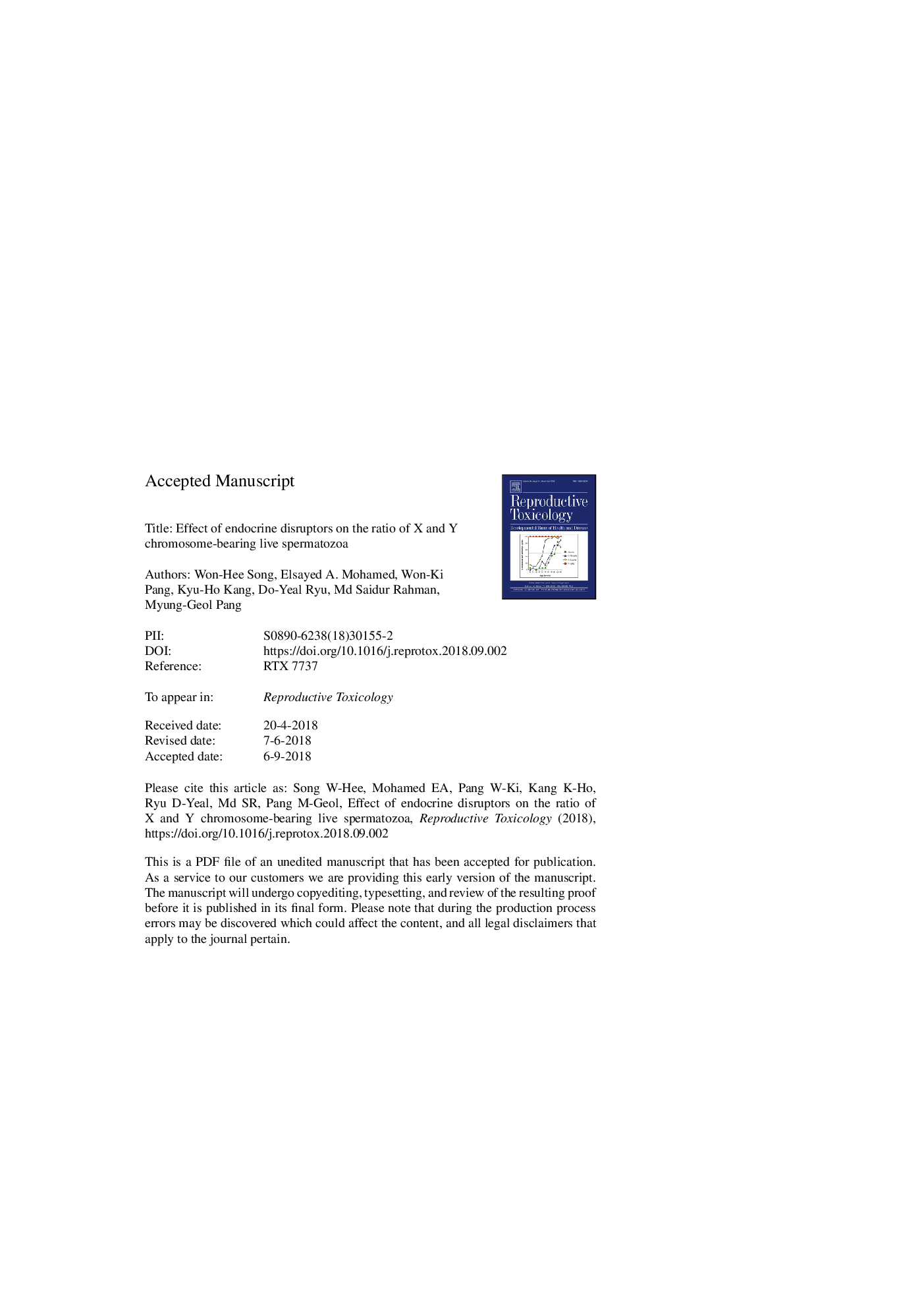| Article ID | Journal | Published Year | Pages | File Type |
|---|---|---|---|---|
| 10158616 | Reproductive Toxicology | 2018 | 29 Pages |
Abstract
Although equal numbers of X and Y spermatozoa are produced during spermatogenesis, the sex chromosome ratio in ejaculated spermatozoa can be altered by exposure to endocrine-disrupting chemicals (EDCs), which can be reflected by altered sex ratios at birth. Here, we hypothesized EDCs affect sperm functions and viability of X and Y chromosome-bearing human spermatozoa. After exposure to genistein (Gen), bisphenol A (BPA), 2,3,7,8-tetrachlorodibenzo-p-dioxin (TCDD), dibromochloropropane (DBCP), and diazinon (Diaz), we evaluated motility, viability, capacitation, and differential viability of X and Y spermatozoa. All EDCs tested altered sperm viability, motility, and capacitation. Interestingly, the Y/X ratio of live spermatozoa was significantly lower in sperm treated with TCDD, DBCP, and Diaz than control spermatozoa. Our results suggest that some of EDCs have larger effects on the viability of Y spermatozoa than X spermatozoa, implicating that a reduction in Y sperm viability may result in a female-biased sex ratio of offspring at birth.
Related Topics
Life Sciences
Environmental Science
Health, Toxicology and Mutagenesis
Authors
Won-Hee Song, Elsayed A. Mohamed, Won-Ki Pang, Kyu-Ho Kang, Do-Yeal Ryu, Md Saidur Rahman, Myung-Geol Pang,
